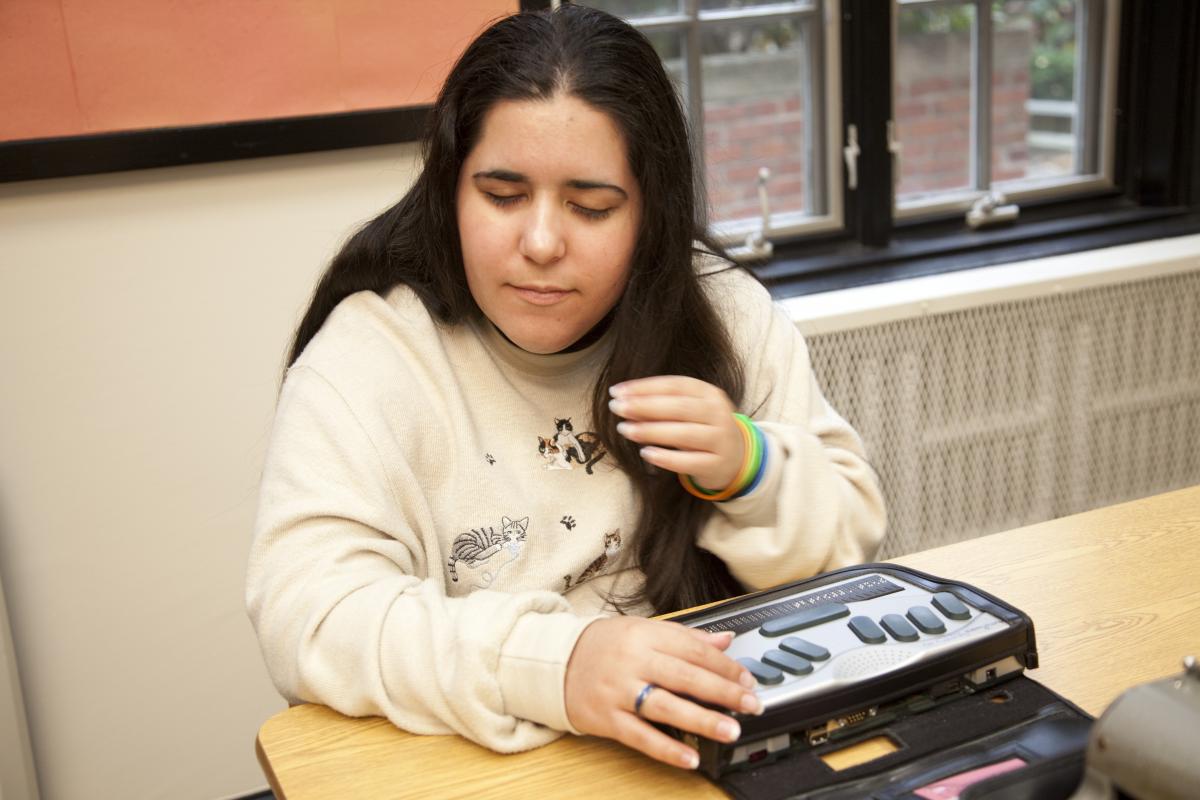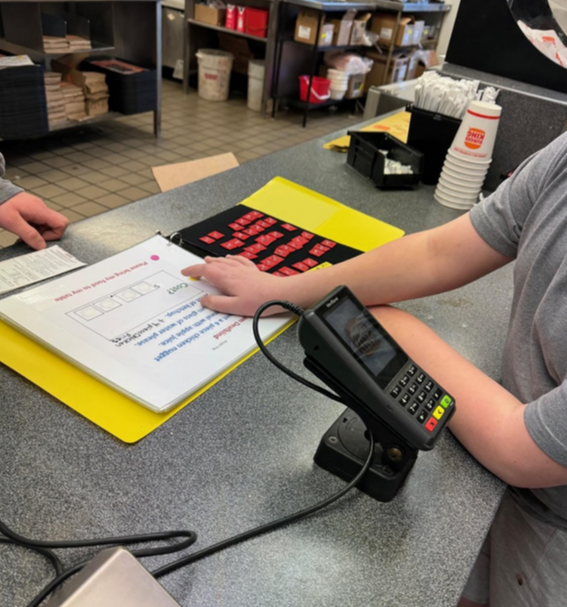
Overview of the Expanded Core Curriculum
The Expanded Core Curriculum (ECC) provides a framework for instruction in a specialized set of vision-related skills for students who are blind or visually impaired. While students who are blind or visually impaired are expected to follow the same core curriculum as their sighted peers, there are certain areas in which they need specific instruction because of their vision loss. Thus, while all students will be expected to participate in core academic subjects, such as English Language Arts, Math, Science, and History, students with visual impairments should also receive instruction in nine specific areas of the Expanded Core Curriculum, including:
-
Compensatory Skills
These critical skills include concept development and organizational skills, as well as communication skills, such as speaking and listening, sign language, tactile symbols, braille or print reading and writing, and accessing recorded materials.
-
Orientation and Mobility
Skills to help a child to know where she is in space and to move safely, independently, and efficiently in the environment
-
Social Interaction
Skills needed to participate actively and appropriately in social situations
-
Independent Living
Skills of daily living needed to care for oneself independently, including personal hygiene, food preparation, cleaning, clothing care, and money management
-
Recreation and Leisure
Skills to promote the enjoyment of leisure activities, including learning new leisure activities and making choices about how to spend leisure time
-
Sensory Efficiency
Skills that help students to use all of their senses, including functional vision, hearing, touch, taste, smell
-
Assistive Technology
Skills to use computers and other electronic equipment to function independently and effectively at school, home or work
-
Career Education
Skills that encourage students to explore career options and learn about the world of work
-
Self-Determination
Skills that enable students to become effective advocates for themselves based on their own needs and goals
What is the Expanded Core Curriculum? Additional Resources
The Expanded Core Curriculum
This article from Family Connect provides an overview of the ECC, with a description of each of the subject skill areas.
Tip Sheet #2: The Expanded Core Curriculum
The New Hampshire Professional Development Center for Vision Education offers a two-page introduction to the ECC, with descriptions of each of the nine areas, and information on who is responsible for the implementation. Download tip sheet as PDF.
Understanding the Expanded Core Curriculum
Perkins School for the Blind’s website provides an overview of the Expanded Core Curriculum, and discusses some of the ways in which the ECC can be incorporated into a student’s day.
The Core Curriculum for Blind and Visually Impaired Students, Including those with Additional Disabilities
This article from Texas School for the Blind and Visually Impaired describes the core curriculum, the expanded core curriculum, and delivery of the core curriculum for students who are blind or visually impaired.
Tools for Teachers
ECC/IEP Planning Template
by Provincial Resource Centre for the Visually Impaired (PRCVI) British Columbia
This blank template has spaces to align goals and activities with different areas of the Expanded Core Curriculum.
Example of template for visual efficiency, submitted by Daphne Hitchcock, British Columbia
Aligning State Standards and the Expanded Core Curriculum: Balancing the Impact of the No Child Left Behind Act
By Keri L. Lohmeier, Journal of Visual Impairment & Blindness; Jan 2009, Vol. 103, No. 1, p. 44
This report offers one perspective on how to create a more balanced curriculum for students who are visually impaired by demonstrating a systematic approach to aligning state standards in the U.S. with the expanded core curriculum (ECC), thereby bridging concepts and promoting additional avenues for integration of the ECC into the school day, and using the aligned concepts to generate meaningful, applicable, and appropriate Individualized Education Programs (IEP) goals. It says that meeting state and federal mandates while maintaining the individuality of educational programs is challenging for all educators. It adds that teachers of students who are visually impaired and certified orientation and mobility (O&M) specialists may be affected even more.





